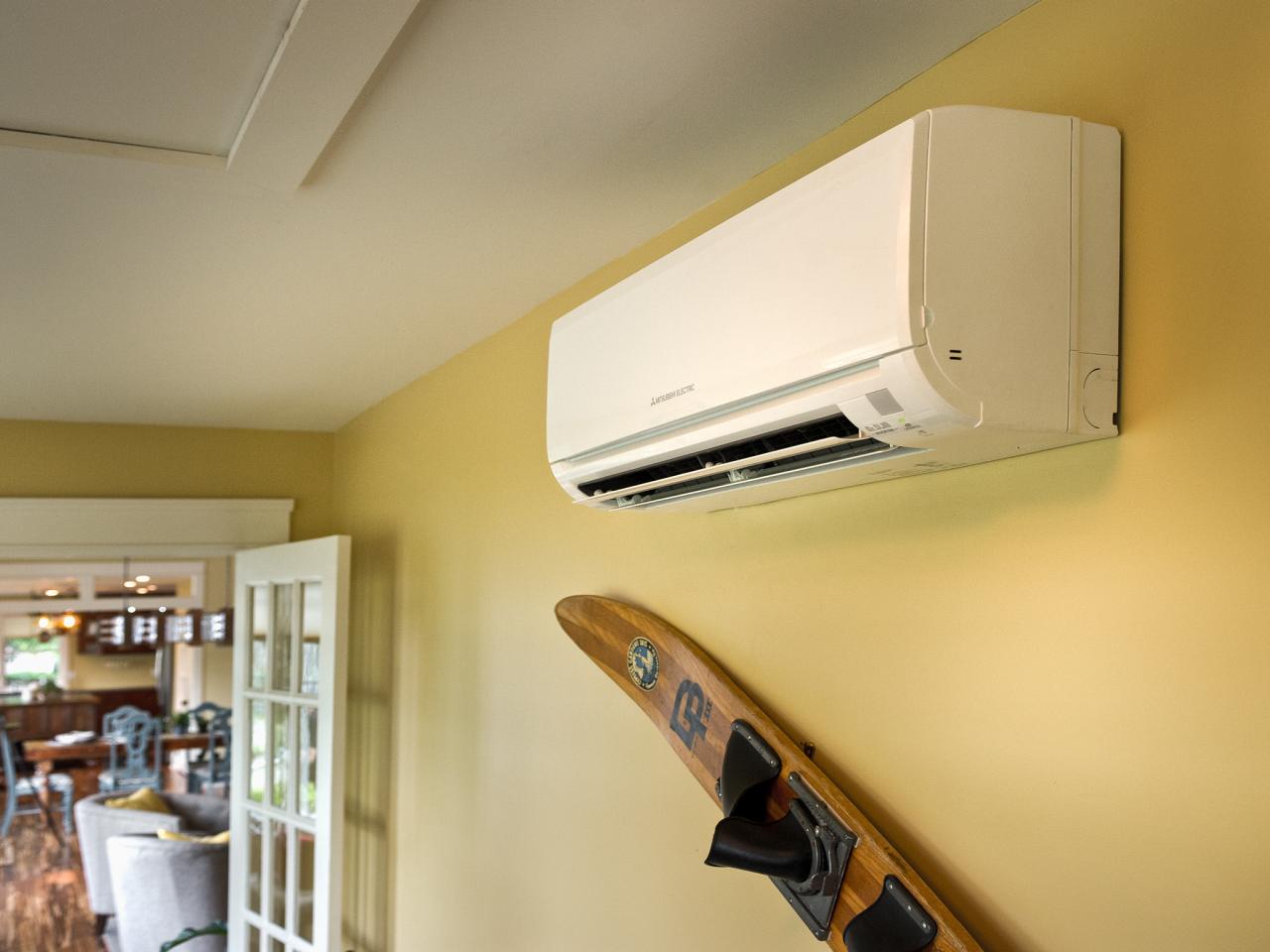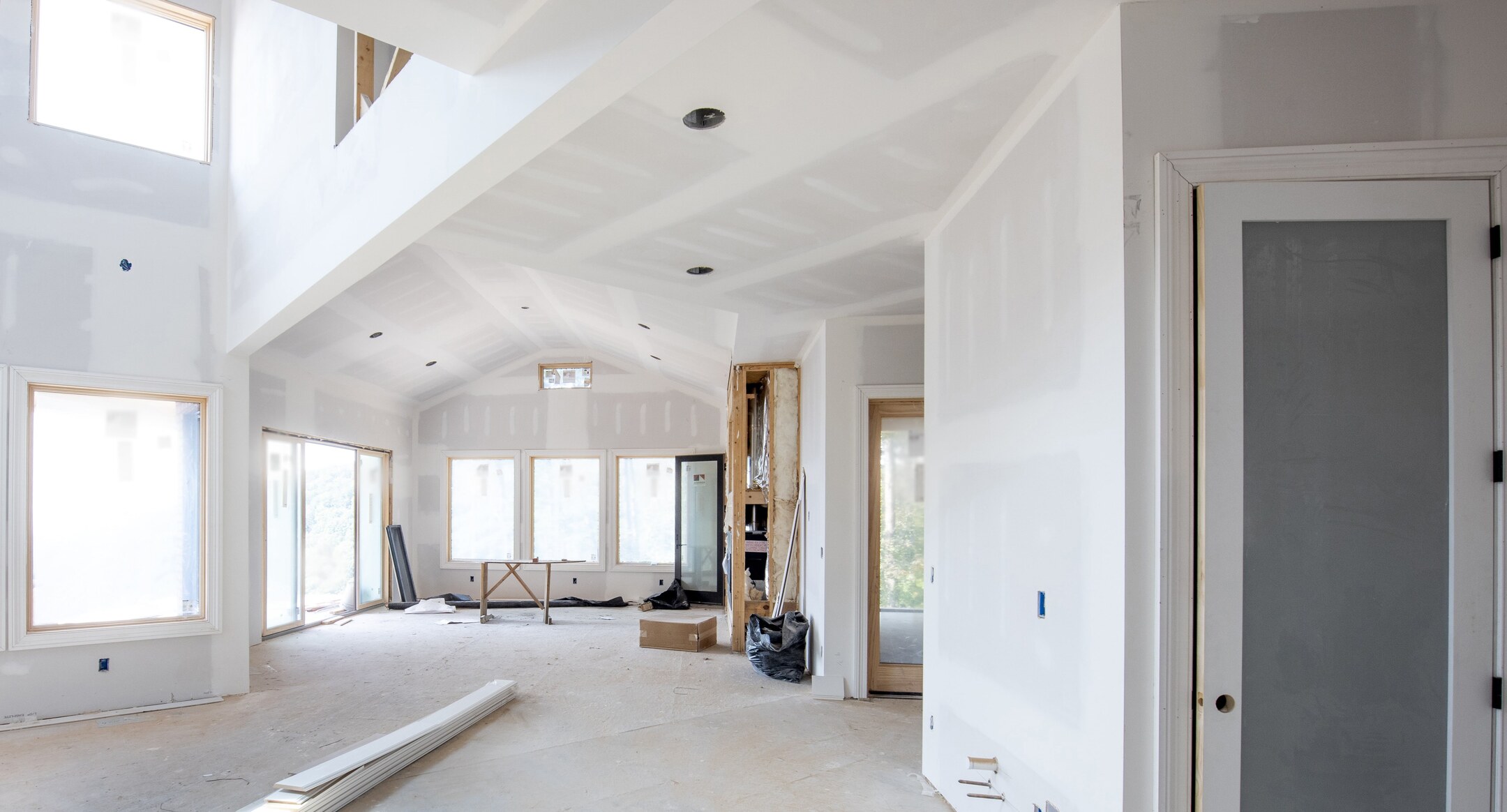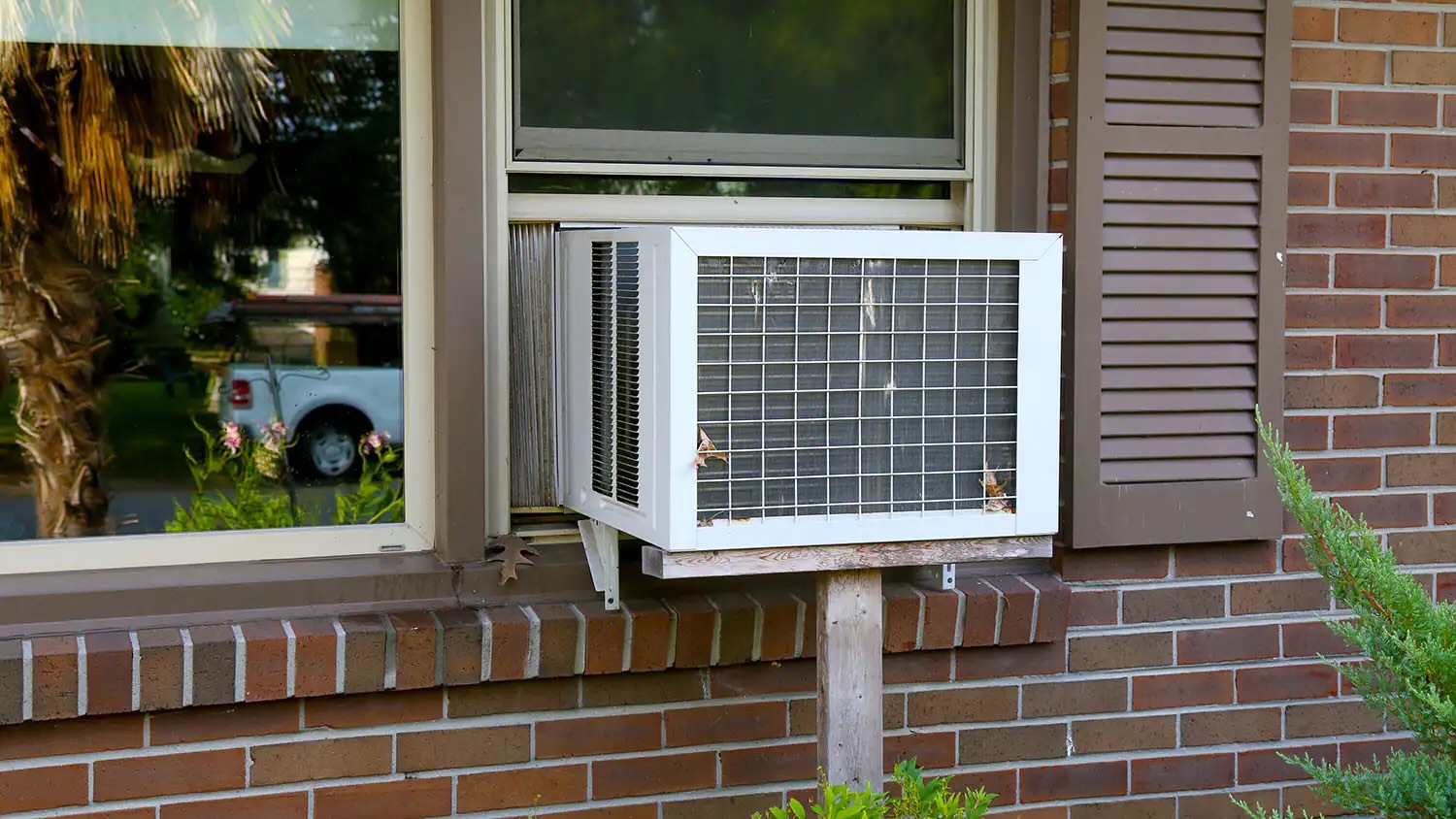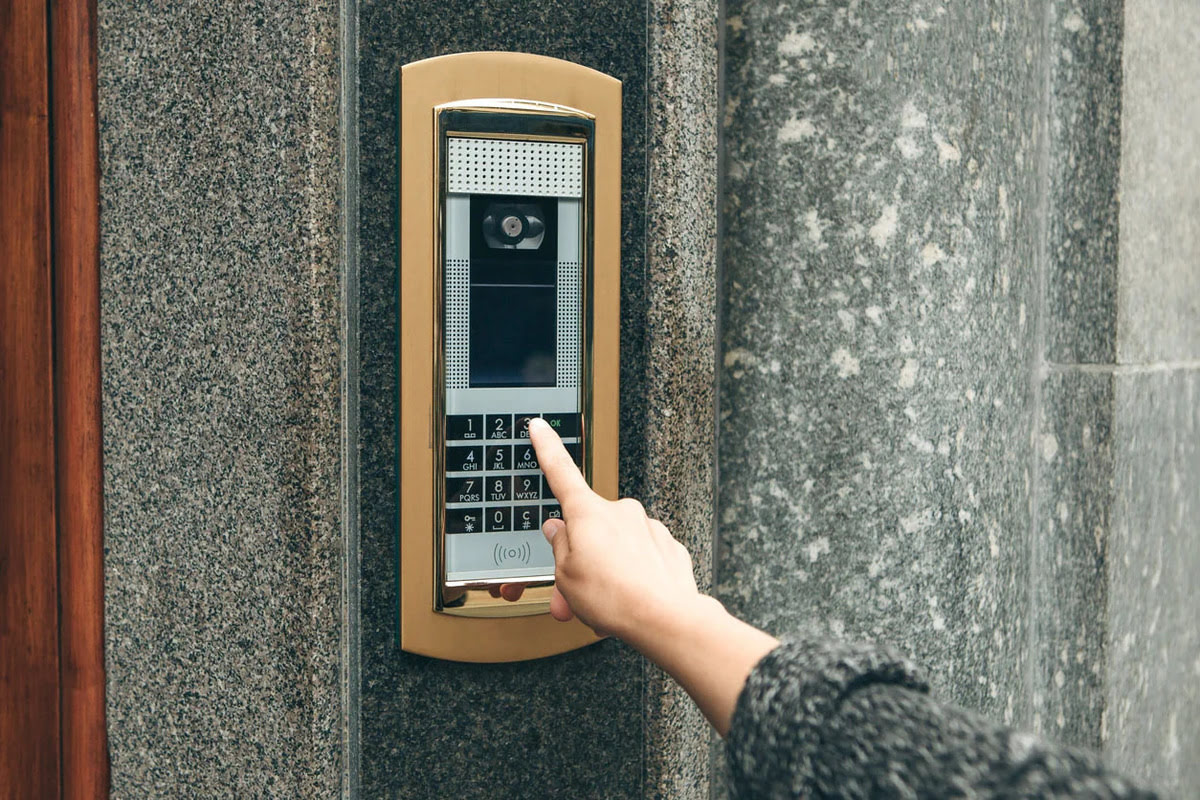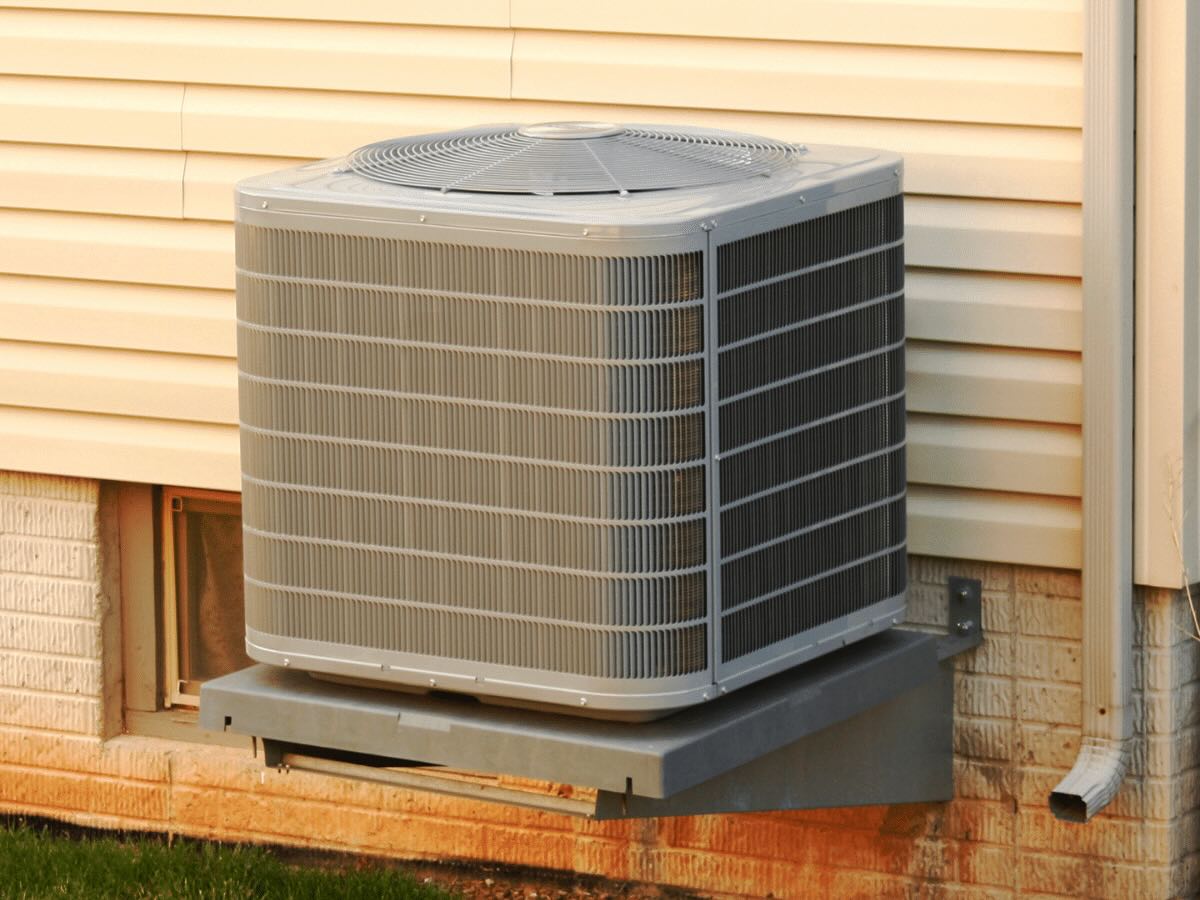Home>Home Maintenance>How Does FEMA Home Repair Assistance Work
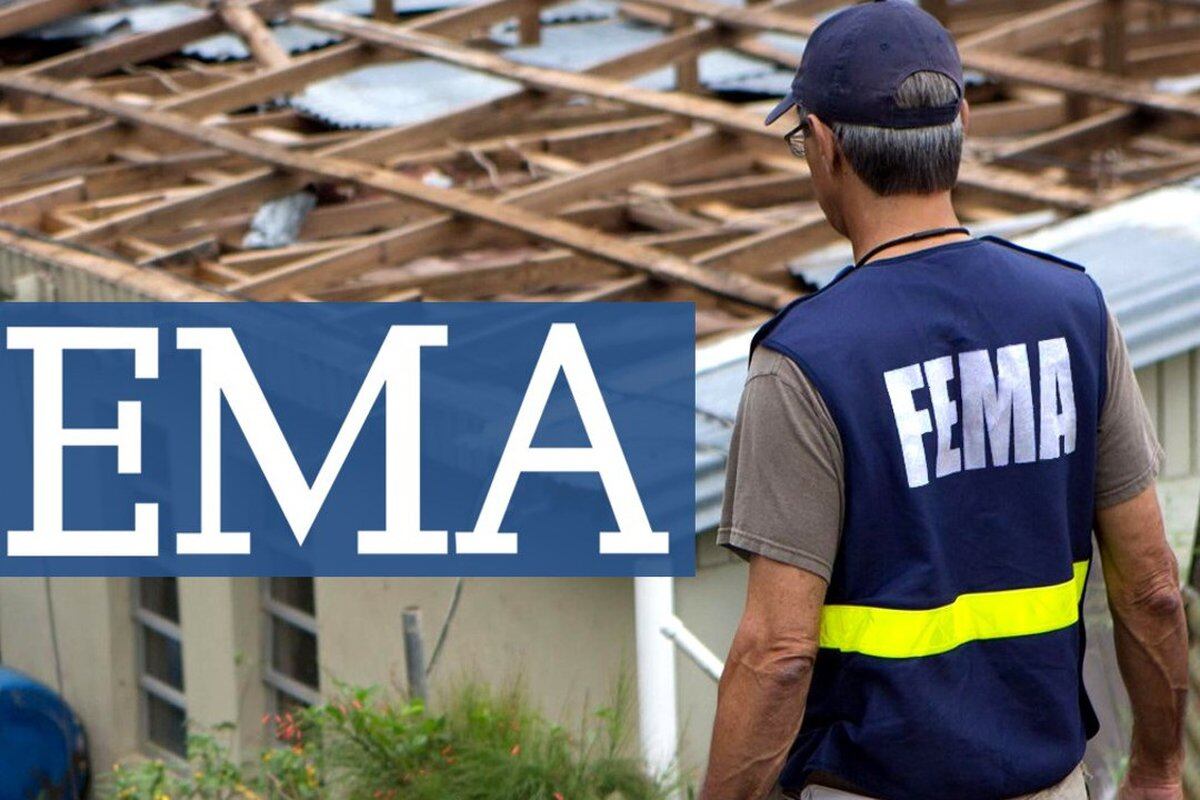

Home Maintenance
How Does FEMA Home Repair Assistance Work
Modified: March 6, 2024
Learn how FEMA home repair assistance works and how it can help with your home maintenance needs. Find out the eligibility criteria and application process.
(Many of the links in this article redirect to a specific reviewed product. Your purchase of these products through affiliate links helps to generate commission for Storables.com, at no extra cost. Learn more)
Introduction
Welcome to the world of home maintenance! If you’re a homeowner, you probably know that maintaining your home is an ongoing process that requires time, effort, and occasional repairs. Whether it’s fixing a leaky faucet, replacing a broken window, or renovating your kitchen, home repairs can be costly and overwhelming. However, there are resources available to homeowners who need financial assistance with repairs, such as the Federal Emergency Management Agency (FEMA) Home Repair Assistance program.
FEMA is an agency of the United States Department of Homeland Security, and one of its main functions is to provide assistance to individuals and communities affected by disasters. This includes helping homeowners repair and rebuild their homes after a natural disaster such as a hurricane, flood, or earthquake. The FEMA Home Repair Assistance program is designed to provide financial support to eligible homeowners, helping them return their homes to a safe and habitable condition.
In this comprehensive guide, we will walk you through the process of applying for and receiving FEMA Home Repair Assistance. We will cover the eligibility requirements, the application process, the inspection and assessment procedures, grant approval and amount determination, the allowable use of funds, contractor selection and project management, monitoring and compliance, and the completion and final inspection of the repair work.
So, if you are in need of home repairs and are wondering how FEMA can help, read on! This guide will give you the information you need to navigate the FEMA Home Repair Assistance program with confidence.
Key Takeaways:
- FEMA Home Repair Assistance helps eligible homeowners after disasters. Follow guidelines, keep records, and choose qualified contractors for successful repairs.
- Use FEMA funds wisely for qualified repairs, comply with program rules, and complete final inspection for a safe and habitable home.
Eligibility for FEMA Home Repair Assistance
The FEMA Home Repair Assistance program is intended to help homeowners who have suffered damages to their homes as a result of a declared disaster. However, not all homeowners are eligible for this assistance. To qualify for FEMA Home Repair Assistance, you must meet certain eligibility criteria:
- You must be the homeowner of your primary residence at the time of the declared disaster. If you own multiple properties, FEMA will only provide assistance for your primary residence.
- Your home must have sustained damages that are a direct result of a declared disaster.
- You must demonstrate that the damages to your home are beyond what you can reasonably handle on your own or with the help of insurance.
- Your home must be located in a designated disaster area that has been declared eligible for individual assistance by FEMA.
- You must be a U.S. citizen, non-citizen national, or qualified alien.
- You must have a valid Social Security number or an Individual Taxpayer Identification Number (ITIN).
It’s important to note that receiving FEMA Home Repair Assistance is not guaranteed even if you meet these eligibility criteria. The demand for assistance may exceed the available funds, and FEMA will prioritize applicants based on their level of need. Additionally, assistance is provided on a case-by-case basis, and the amount of assistance you receive will depend on the extent of the damages to your home and other factors.
If you meet the eligibility requirements, it’s time to proceed to the next step – the application process. We will guide you through the application process in the next section.
Application Process
The application process for FEMA Home Repair Assistance is relatively straightforward, but it does require attention to detail and proper documentation. Here are the steps to follow:
- Contact FEMA: Start by contacting FEMA to initiate the application process. You can reach FEMA by calling their toll-free helpline or by visiting their official website. Be prepared to provide relevant information such as your name, address, contact information, and the nature and extent of the damages to your home.
- Register with FEMA: After contacting FEMA, you will need to register for assistance. This can be done over the phone or online. During the registration process, you will be asked to provide personal information, including your Social Security number or ITIN. It is important to provide accurate and up-to-date information to avoid delays or potential issues with your application.
- Complete the Application: Once you have registered with FEMA, you will need to complete and submit the application for assistance. The application will require you to provide detailed information about your household, your income, your insurance coverage, and the damages to your home. You may also be required to provide documentation, such as photographs or repair estimates, to support your application.
- Attend a Home Inspection: After submitting your application, a FEMA representative will contact you to schedule a home inspection. The purpose of the inspection is to assess the damages to your home and verify the information provided in your application. It is important to be present during the inspection and to provide the FEMA inspector with access to your home and any relevant documents.
- Receive a Decision: Once the inspection is complete, FEMA will review your application and make a decision regarding your eligibility and the amount of assistance you will receive. You will receive a notification letter from FEMA informing you of their decision. If approved, the letter will also include information on how to access the funds.
It’s crucial to complete the application process accurately and in a timely manner. Any missing or incorrect information could delay the processing of your application or potentially result in a denial of assistance. If you have any questions or need assistance with the application, FEMA is available to help you throughout the process.
In the next section, we will discuss the inspection and assessment procedures that take place after you have submitted your application.
Inspection and Assessment
Once you have submitted your application for FEMA Home Repair Assistance, the next step in the process is the inspection and assessment of the damages to your home. During this stage, a FEMA inspector will visit your property to evaluate the extent of the damages and verify the information provided in your application.
Here’s what you can expect during the inspection and assessment:
- Scheduling the Inspection: After submitting your application, you will be contacted by a FEMA representative to schedule a date and time for the inspection. The inspector will typically visit your property within a few weeks of your application submission.
- Walkthrough of the Property: During the inspection, the FEMA inspector will conduct a thorough walkthrough of your property, both inside and outside. They will assess the damages caused by the disaster and determine the extent of the repairs needed to restore your home to a safe and habitable condition.
- Documenting the Damages: The inspector will document the damages by taking photographs and notes. They may also ask you questions about the damages and any repairs you have already made. It is essential to provide accurate and detailed information during the inspection to ensure a fair assessment of your home’s condition.
- Verification of Information: The inspector will cross-reference the information provided in your application with the actual conditions of your home. They will also verify other details, such as your residency and the ownership of the property.
- Discussion of Repairs: As the inspector assesses the damages, they may discuss potential repair options with you. They may provide guidance on the types of repairs that are eligible for FEMA assistance and offer recommendations based on their professional judgment.
It’s important to note that the FEMA inspector’s role is to assess the damages and gather information. They do not have the authority to make final determinations regarding your eligibility or the amount of assistance you will receive. The final decision is made by FEMA based on the inspection report and other factors.
After the inspection and assessment, the inspector will submit their findings to FEMA for review. In the next section, we will explore the process of grant approval and how the amount of assistance is determined.
Grant Approval and Amount Determination
After the inspection and assessment of the damages to your home, FEMA will review the findings and make a decision regarding your grant approval and the amount of assistance you will receive. The approval process involves several factors and considerations to ensure that the assistance provided is fair and sufficient to meet your needs.
Here’s what happens during the grant approval and amount determination stage:
- Data Review: FEMA will review the inspection report and any other relevant documentation submitted with your application. They will cross-reference the inspector’s findings with the information provided in your application to ensure accuracy and consistency.
- Eligibility Assessment: FEMA will assess your eligibility based on the established criteria and guidelines. They will verify that you meet the requirements for assistance, including residency, property ownership, and the direct impact of the declared disaster.
- Determination of Assistance: Once your eligibility is confirmed, FEMA will determine the amount of assistance you will receive. This is done by evaluating the extent of the damages, the cost of necessary repairs, and your demonstrated need for financial assistance. The amount is typically determined based on the estimates provided by the inspector and other relevant factors.
- Notification of Decision: You will receive a letter from FEMA informing you of their decision regarding your grant approval and the amount of assistance you will receive. The letter will outline the specific details of your grant and provide instructions on how to access the funds. It’s important to read this letter carefully and follow the instructions provided.
It’s important to note that the amount of assistance provided by FEMA may not cover the entire cost of repairs. FEMA typically offers assistance to bridge the gap between what you can afford and the amount needed to restore your home to a safe and habitable condition. Therefore, it’s important to carefully plan your repairs and make informed decisions regarding the use of the funds.
In the next section, we will discuss the allowable use of funds and how you can effectively manage your home repair project.
When applying for FEMA home repair assistance, make sure to document all damage with photos and receipts, and keep all communication with FEMA in writing.
Read more: What Is Google Home Assistant
Use of Funds
Once you receive approval for FEMA Home Repair Assistance and access the funds, you need to understand the allowable use of the funds. FEMA provides financial assistance to help homeowners repair their homes and make them safe and habitable again. However, there are guidelines on how the funds can be used to ensure that they are used effectively and efficiently.
Here are the key points to understand regarding the use of FEMA Home Repair Assistance funds:
- Qualified Repairs: The funds provided by FEMA should be used for qualified repairs that address the damages caused by the declared disaster. These repairs should focus on restoring your home’s functionality, safety, and habitability. This may include repairing structural damage, fixing electrical or plumbing issues, replacing damaged flooring, or restoring roofs that have been compromised.
- Insurable Repairs: If you have insurance coverage for the damages to your home, you are expected to use the insurance funds before utilizing the FEMA assistance. The FEMA funding should be used to cover the remaining costs that exceed your insurance coverage.
- Documentation and Receipts: It’s crucial to keep detailed documentation and receipts for all repairs and expenses related to the use of FEMA funds. This includes invoices from contractors, receipts for materials purchased, and any other relevant documentation. Proper documentation ensures transparency, accountability, and compliance with FEMA regulations.
- Contractor Selection: You are responsible for selecting and hiring contractors to carry out the repairs. It’s important to choose reputable and licensed contractors who have experience with the type of repairs needed. Obtain multiple estimates and compare them to ensure competitive pricing and quality workmanship.
- Cost Control: It’s vital to manage the costs associated with the repair project effectively. Plan and budget the funds wisely to cover the necessary repairs and avoid overspending. Prioritize essential repairs and address safety concerns first. Seek guidance from professionals if needed to ensure that the funds are used wisely.
- Program Compliance: Throughout the repair process, it’s important to comply with FEMA program requirements and regulations. This includes adhering to any guidelines or restrictions regarding the use of the funds and following any reporting or monitoring processes that may be required.
By using the FEMA funds responsibly and within the established guidelines, you can effectively restore and improve the condition of your home. Proper usage of the funds ensures that they benefit you as well as the overall recovery efforts in your community.
In the next section, we will discuss the importance of contractor selection and how to effectively manage your home repair project.
Contractor Selection and Project Management
When it comes to repairing your home with FEMA Home Repair Assistance funds, selecting the right contractor and effectively managing the project are crucial for successful outcomes. Here are some key considerations for contractor selection and project management:
- Research and References: Take the time to research and gather references for potential contractors. Look for professionals who are experienced in the type of repairs needed for your home. Ask for recommendations from friends, family, or neighbors who have had successful home repair projects.
- Licensing and Insurance: Ensure that the contractor you choose is properly licensed and insured to legally perform the repairs. Request proof of insurance coverage and ask for their licensing information. This helps protect you from liabilities and ensures that the contractor meets professional standards.
- Multiple Bids: Obtain multiple bids from different contractors to compare pricing, scope of work, and timelines. This gives you a better understanding of the market and helps you make an informed decision. However, be cautious of unusually low bids, as they may indicate subpar quality or potential hidden costs.
- Contract Agreement: Once you select a contractor, make sure to have a written contract agreement in place. The contract should include details such as the scope of work, materials to be used, timelines, payment terms, and any warranties or guarantees. Review the contract carefully and ask for clarification on any unclear terms before signing.
- Project Oversight: Stay involved in the repair project by regularly communicating with the contractor. Visit the worksite, ask for progress updates, and address any concerns or questions promptly. This helps maintain accountability and ensures that the repairs are being carried out according to the agreed-upon terms.
- Documentation and Payments: Keep thorough documentation of all interactions and transactions with the contractor. Maintain records of invoices, receipts, and any change orders made during the project. Make payments in accordance with the contract terms and ensure that they are properly documented.
- Quality Assurance: Inspect the completed repairs and ensure that they meet your expectations and the agreed-upon specifications. If any issues or deficiencies are identified, address them with the contractor promptly. It’s important to have any necessary follow-up work completed before the project is considered finished.
By carefully selecting a qualified contractor and actively managing the repair project, you can ensure that the funds provided by FEMA are used efficiently and that the repairs are completed to your satisfaction. Effective project management helps prevent delays, cost overruns, and potential disputes, ensuring a successful home repair experience.
In the next section, we will discuss the monitoring and compliance aspects of the FEMA Home Repair Assistance program to ensure that you stay in compliance with program regulations.
Monitoring and Compliance
As a recipient of FEMA Home Repair Assistance, it’s important to understand the monitoring and compliance requirements to ensure that you stay in accordance with program regulations. FEMA has systems in place to monitor the progress and compliance of home repair projects funded through their assistance program. Here’s what you need to know:
- Reporting and Documentation: Throughout the repair project, you may be required to submit periodic reports and documentation to FEMA. These reports help FEMA track the progress of the repairs and ensure that the funds are being used appropriately. Be sure to keep accurate records and provide any requested documentation in a timely manner.
- Inspections and Audits: FEMA may conduct field inspections or audits to verify the eligibility, accuracy, and compliance of the repairs funded through their assistance program. These inspections or audits serve as a quality control measure and help detect any fraudulent or misused funds. Cooperate with the inspectors or auditors and provide them with access to the required information about your repair project.
- Record Retention: It’s important to retain all documentation related to the FEMA Home Repair Assistance program for a certain period of time, usually up to three years. This includes receipts, invoices, contracts, and any other relevant records. Proper record retention ensures that you can provide evidence of compliance and demonstrate accountability if requested by FEMA.
- Program-Related Changes: Keep informed about any changes or updates to the FEMA Home Repair Assistance program. FEMA may periodically revise the program guidelines and regulations, so it’s important to stay up-to-date with any programmatic changes that may impact your repair project.
- Compliance Reviews: FEMA has the authority to conduct compliance reviews to evaluate your adherence to program requirements. These reviews may include interviews, inspections, record reviews, and other measures to assess your compliance with the program rules. Cooperate fully during compliance reviews and provide accurate and timely information as requested.
- Reporting Fraud or Misuse: If you suspect any fraudulent activity or misuse of FEMA funds, it’s important to report it immediately. FEMA has procedures in place for reporting fraud, waste, or abuse related to their assistance programs. By reporting any wrongdoing, you help protect the integrity of the program and ensure that funds are used for their intended purpose.
By understanding and adhering to the monitoring and compliance requirements of the FEMA Home Repair Assistance program, you can ensure that you remain in good standing and maintain your eligibility for assistance. It’s essential to cooperate fully with FEMA and provide accurate and timely information throughout the process.
In the final section, we will discuss the completion of the repair project and the final inspection process.
Completion and Final Inspection
Congratulations! You have reached the final stages of your home repair project funded by FEMA Home Repair Assistance. The completion and final inspection are crucial steps to ensure that the repairs meet the necessary standards and that you can move forward with confidence in your restored home. Here’s what you can expect:
- Finishing Touches: As the repair project nears its completion, the contractor will focus on the finishing touches to ensure that the repaired areas blend seamlessly with the rest of your home. This may include paint touch-ups, trim installation, or any final adjustments needed to achieve a polished look.
- Quality Control: Before scheduling the final inspection, conduct your own quality control inspection to ensure that all repairs have been completed to your satisfaction. Take note of any outstanding issues or deficiencies that you may want to address with the contractor before the final inspection.
- Final Inspection: FEMA will schedule a final inspection of the repairs to verify that they meet the necessary standards and comply with the program requirements. A FEMA inspector will visit your property to assess the completed repairs and confirm that they have been carried out to a satisfactory level.
- Documentation: During the final inspection, be prepared to provide any requested documentation related to the repair project. This may include receipts, invoices, permits, or other relevant records. The inspector will review the documentation to validate the expenses and ensure compliance with program guidelines.
- Correction of Deficiencies: If the final inspection reveals any deficiencies or areas that do not meet the necessary standards, work with your contractor to address these issues promptly. It’s important to rectify any outstanding matters to ensure that the repair project is fully completed and complies with FEMA’s requirements.
- Project Closure: Once the final inspection has been successfully completed, and any necessary corrections have been made, your repair project can be considered officially closed. At this point, you can move forward with peace of mind, knowing that your home has been restored to a safe and habitable condition.
Completing the final inspection is a significant milestone in your home repair journey. It signifies the successful completion of the repairs and ensures that the funds provided by FEMA have been used appropriately. It’s important to maintain the documentation and records related to the repair project even after the completion, as FEMA may conduct future audits or reviews.
Now that your home repairs are complete, you can enjoy the comfort and security of your revitalized home. Remember to keep up with regular maintenance to ensure that your home remains in good condition for years to come.
Thank you for using FEMA Home Repair Assistance as a resource to help you navigate this process. We hope that this guide has provided you with valuable information and insights to make your home repair journey a success.
Read more: How Does Insulation Work
Conclusion
Repairing and maintaining your home is an essential part of being a homeowner. However, in the face of natural disasters and unexpected damages, the cost of home repairs can be overwhelming. Fortunately, the FEMA Home Repair Assistance program is available to provide financial support to eligible homeowners in their time of need.
Throughout this comprehensive guide, we have explored the various aspects of the FEMA Home Repair Assistance program, including eligibility requirements, the application process, inspection and assessment procedures, grant approval and amount determination, the allowable use of funds, contractor selection and project management, monitoring and compliance, as well as the completion and final inspection of the repair project.
Remember, the key to navigating the FEMA Home Repair Assistance program successfully is to carefully follow the guidelines and regulations set by FEMA. By understanding the eligibility requirements, completing the application accurately, maintaining proper documentation, and choosing qualified contractors, you can increase your chances of receiving the necessary assistance and ensuring that the repair project is carried out effectively.
While the FEMA Home Repair Assistance program provides valuable support, it’s essential to recognize that it may not cover the entire cost of repairs. It is important to plan and budget efficiently to bridge any gaps between the assistance provided and the total cost of repairs, including any insurance coverage that may be available to you.
Lastly, we encourage you to remain vigilant when it comes to monitoring and compliance. Stay organized, keep accurate records, and be prepared to cooperate with FEMA during inspections, audits, and compliance reviews. By adhering to program requirements and reporting any suspicions of fraud or misuse, you contribute to the integrity and effectiveness of the program for the benefit of all homeowners in need.
We hope this guide has provided you with valuable insights into the FEMA Home Repair Assistance program and has empowered you to navigate the process successfully. Remember, the goal is to restore your home to a safe and habitable condition, allowing you to move forward with peace of mind and security.
Thank you for your commitment to the maintenance and well-being of your home. We wish you the best of luck in your repair endeavors, and we hope that this assistance helps you on your journey to a restored and resilient home.
Frequently Asked Questions about How Does FEMA Home Repair Assistance Work
Was this page helpful?
At Storables.com, we guarantee accurate and reliable information. Our content, validated by Expert Board Contributors, is crafted following stringent Editorial Policies. We're committed to providing you with well-researched, expert-backed insights for all your informational needs.





